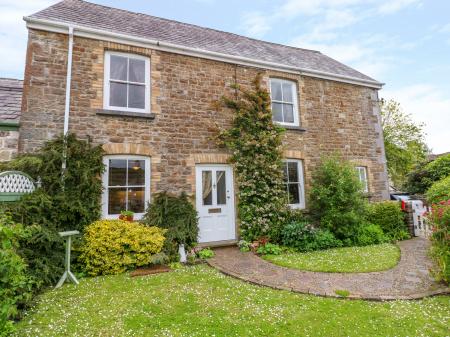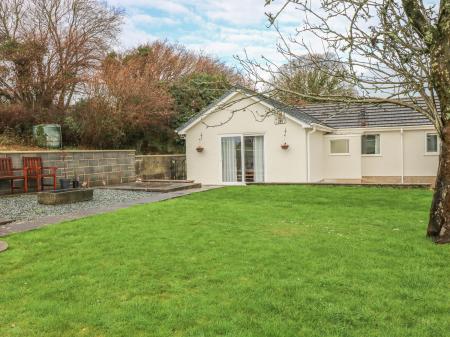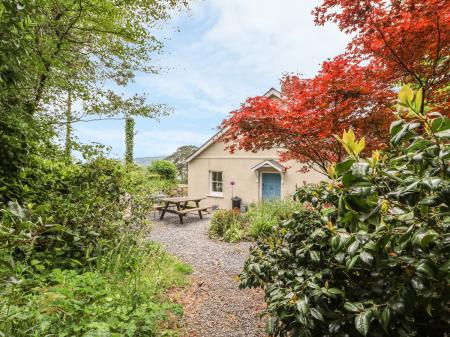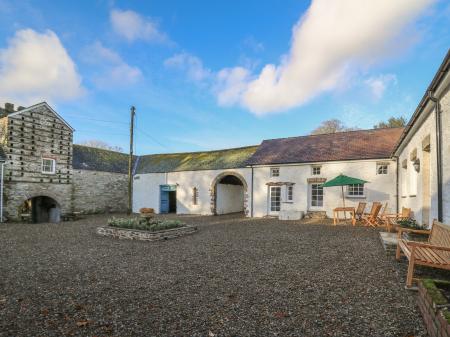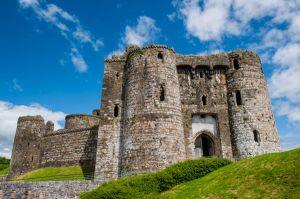
In 1136 the Welsh rose in revolt against the Norman invaders in south Wales. Gruffudd ap Rhys, Prince of Deheubarth, rode north to plead for aid from the princes of Gwynedd, while his wife, Gwenllian, led a Welsh army against Kidwelly. Gwenllian was defeated and killed at Maes Gwenllian, just north of the castle, by English troops under Maurice de Londres (see Ogmore Castle).
The princes of Deheubarth then lost Kidwelly to Rhys ap Gruffudd in 1159, and again in 1190 and yet again in 1215 when it was taken by Rhys's son Rhys Gryg. In 1220 it passed to Hawise de Londres, who managed to resist the attacks of Llewelyn ap Iorwerth in 1231. Hawise's sons Pain and Patrick de Chaworth rebuilt much of the earlier castle, creating in the process the striking fortress we can see today.
In the late 13th century Kidwelly passed to William de Valence, uncle of Edward I, but when he died in 1296 it devolved to Henry, Earl of Lancaster. It passed through Henry's granddaughter Blanche, wife of John of Gaunt, into royal ownership. Sometime in the 14th century, the grand gatehouse was added, and Kidwelly began to be used as an administrative centre for the powerful Lancaster family.
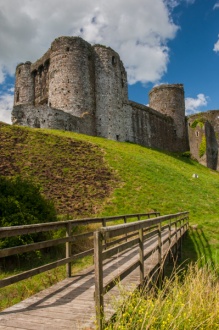
The castle was still being strengthened in 1403 when it was attacked by Henry Don, a supporter of Owain Glyndwr's rebellion against the English crown. The town was sacked, but Kidwelly Castle held out for four months until Don gave up.
Though repairs continued over the subsequent centuries, the castle was no longer needed for military purposes and fell into a gradual decay. Unlike many Welsh castles, Kidwelly played no part in the Civil War. It was eventually purchased by Earls of Cawdor, but in 1927 it passed into government care.
Kidwelly Castle has an inner ward with four round towers that provided domestic rooms. Later it was added onto and become a concentric castle with walls within walls. A hall block, chapel and outer stone curtain wall were added. A twin-towered gatehouse guarded the entrance. Guardrooms, a dungeon and other rooms were located here. In the 1500's more rooms were added in both the inner and outer wards.
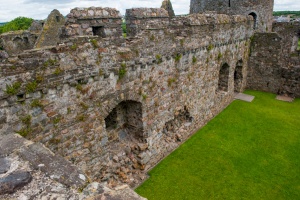
Visiting Kidwelly
It's a bit of a mystery that Kidwelly Castle is not better known; it is one of the most striking and imposing medieval castles in Wales. The more we explored the ruins, the more impressed I became.
You can ascend stairs to the top of the parapet and walk a section of the walls, with excellent views over Kidwelly town. Even better views can be had from the top of several towers, and this helps to get a really good idea of the layout of the site and the various buildings within the high walls.
When we visited the chapel was fenced off pending renovation to stabilise the stonework, but the rest of the site was open to explore, including two subterranean storage chambers beneath the gatehouse. A short walk from the gatehouse is the last remaining gateway between the town and the castle precinct.
Do take the time to stroll into the old central section of Kidwelly from the castle; it takes about 5 minutes by way of the medieval bridge, or you can take a riverside walk below the castle. Either way gives wonderful views over the river, to where the spire of Kidwelly's medieval church soars high over a belt of trees. It is well worth taking the time to explore the church, which contains a 14th century statue of the Madonna and Child in a niche by the altar.

Kidwelly Castle, our first castle of the day. An imposing structure, of round towers on a curtain wall. The bright blue sky contrasts, with the grey atmosphere of the castle.
I wandered into the gatehouse, crossing the now permanent bridge. Were it drawn up, it would have made the entrance a sheer cliff, the only possible door eight feet from the ground. There is no moat, but earthworks surround the castle, and the river ripples gently in the valley below. Kidwelly Castle, or Cidweli as it was originally called, guards the highest navigable point on the river.
If you want to learn about castles, this is the place to go. It was built over centuries and is ruined in degrees. Some buildings have weathered well, others show their foundations. The castle has become a labyrinth of empty rooms.
I spent ten minutes finding my way out of the inner ward, the square courtyard which replaces the keep. This does not detract from its security. With only two entrances, corresponding to the two gatehouses, the inner ward is a true stronghold. Even under siege, it would be more pleasant than most keeps, as much as any siege can be pleasant.
The castle is well prepared. Archers could fire from the inner ward towers over the outer wall, apparently making the castle easier and cheaper to man. It has all the state of the art facilities for a castle: sally port, prison (in the gatehouse!), murder holes by the portcullis.
Arrow slits aplenty, and very specialised. One points from the base of the main gatehouse, once enabling archers to hit unsuspecting invaders from below. Now it points at the bottom of the bridge. The purpose of everything is fairly clear. Though it doesn't follow the traditional keep and curtain wall form, Kidwelly has everything a castle needs, making it superb for educational visits as well as just wandering about.
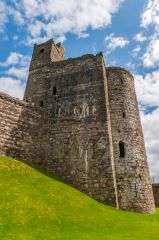








 We've 'tagged' this attraction information to help you find related historic attractions and learn more about major time periods mentioned.
We've 'tagged' this attraction information to help you find related historic attractions and learn more about major time periods mentioned.